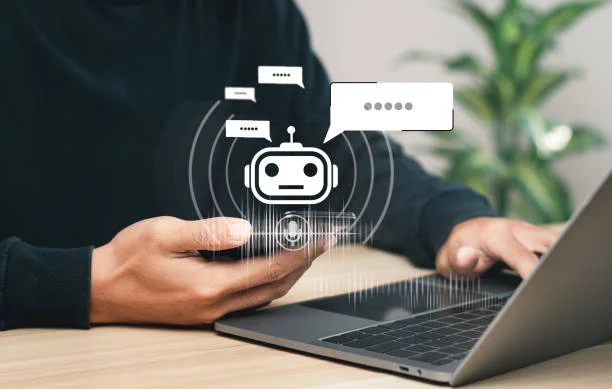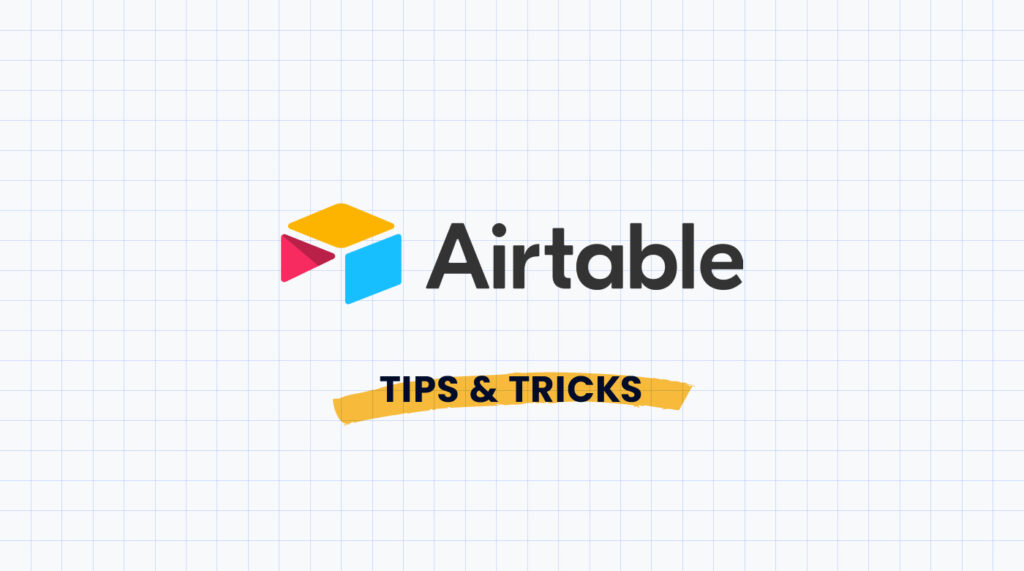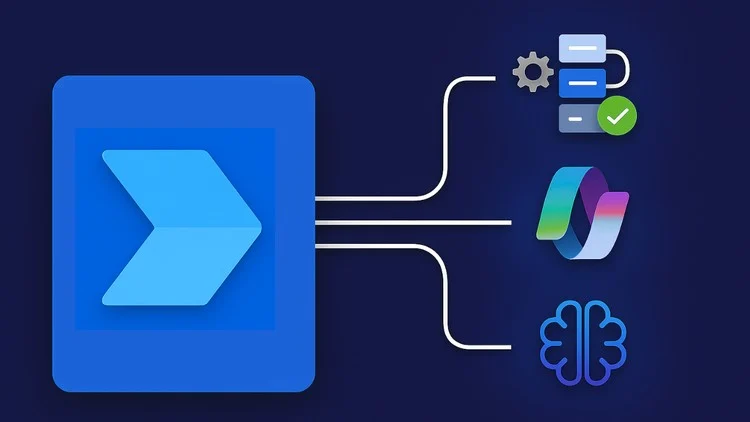Understanding AI Music Generation: A Beginner’s Guide
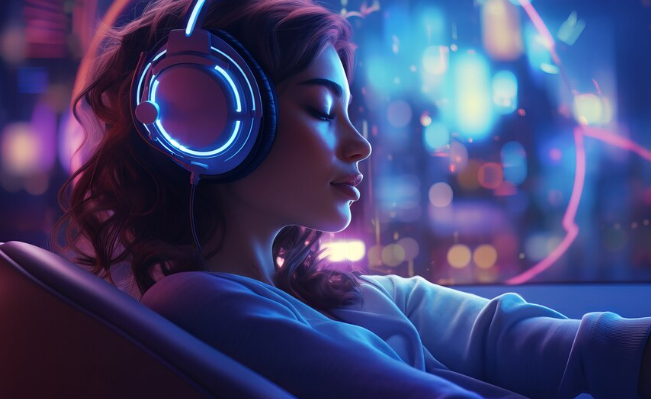
Demystifying AI Music Software
AI music software leverages sophisticated algorithms, primarily machine learning and deep learning models, to generate original musical compositions. These models are trained on vast datasets of existing music, learning patterns, styles, and structures. In our experience, the quality of the generated music is directly correlated to the size and diversity of this training dataset. Larger, more varied datasets generally lead to more creative and nuanced outputs.
A common misconception is that these tools replace human musicians entirely. Instead, they act as powerful creative partners. Think of them as advanced instruments, capable of generating melodies, harmonies, rhythms, and even entire arrangements based on user-specified parameters. For example, you might input a desired genre (e.g., jazz, classical), tempo, and key, and the software will generate a musical piece reflecting these preferences. However, the human element remains crucial in refining the output, editing, and adding personal touches to create a truly unique composition. The process is often iterative, with the user experimenting with various parameters and refining the AI’s suggestions.
Different software packages utilize various techniques. Some employ generative adversarial networks (GANs), pitting two neural networks against each other to refine the output. Others might rely on Markov chains to predict the next musical event based on probability. The choice of algorithm significantly impacts the final product, with some leaning towards more predictable, structured pieces, while others produce more experimental, unpredictable results. Understanding these underlying mechanisms empowers users to make informed choices when selecting AI music generation software and fine-tuning their creative process.
How AI Composes Music: A Look Under the Hood
AI music generation isn’t magic; it’s sophisticated data processing. Many systems rely on machine learning, specifically deep learning models like recurrent neural networks (RNNs) and generative adversarial networks (GANs). RNNs, particularly Long Short-Term Memory (LSTM) networks, excel at processing sequential data, making them ideal for composing music, which unfolds over time. These models are trained on massive datasets of musical scores, learning patterns, harmonies, and rhythms.
In our experience, the quality of the generated music heavily depends on the training data’s size and diversity. A model trained on only classical music will produce classical-sounding pieces, while one trained on a diverse range of genres will have a broader creative palette. A common mistake we see is expecting AI to spontaneously generate groundbreaking, original music without extensive, high-quality training. The system essentially learns to statistically predict the next note, chord, or rhythm based on its training. While it might not compose in the same way a human does, it can produce surprisingly innovative and stylistically consistent output.
Furthermore, different AI music generation tools employ varied approaches. Some focus on note-level generation, meticulously crafting individual notes and their attributes. Others operate at a higher level, generating harmonic progressions or melodic motifs which are then elaborated upon. The choice of algorithm and the level of user interaction significantly impact the final product. For example, some platforms offer granular control over parameters like tempo, instrumentation, and key, giving users considerable influence over the creative process. Others provide a more automated experience with less control but faster results.
Benefits of AI Music Creation for Beginners
For aspiring musicians, AI music creation tools offer a unique entry point into the world of composition, bypassing many traditional hurdles. One key benefit is the democratization of music production. No longer is expensive equipment or years of formal training a prerequisite. In our experience, beginners often find themselves overwhelmed by the complexities of traditional Digital Audio Workstations (DAWs). AI tools simplify this process, allowing immediate experimentation and tangible results, fostering a sense of accomplishment crucial for early motivation.
Another significant advantage lies in overcoming creative blocks. Many beginners struggle to translate their musical ideas into a concrete form. AI can act as a powerful brainstorming partner, offering variations, suggestions, and even entire compositions based on simple input. For example, providing a basic melody can yield a range of instrumental arrangements, harmonic progressions, or rhythmic variations – all possibilities a beginner might not readily explore independently. This process unlocks creative potential and expands musical horizons.
Finally, AI aids in developing crucial fundamental musical skills. While AI generates the music, users still need to select styles, instruments, tempos, and other parameters. This interactive process implicitly teaches basic music theory concepts like melody, harmony, and rhythm. A common mistake we see is expecting AI to do all the work. Active engagement with the tools, understanding their capabilities and limitations, is essential for maximizing learning and producing truly unique and satisfying music. The iterative nature of working with AI fosters a deep understanding of musical structure and enhances creative control over time.
Common misconceptions about AI music creation
Many believe AI music generation replaces human composers entirely. This is inaccurate. In our experience, AI serves as a powerful *tool* for musicians, accelerating the creative process and unlocking new sonic possibilities, but not replacing the artistry of human composition, arrangement, and emotional expression. Think of it as a sophisticated synthesizer, offering a vast palette of sounds and textures, but requiring a skilled musician to shape it into a compelling piece.
A common mistake we see is assuming all AI music generators are created equal. The quality of output varies significantly depending on the algorithms used, the training data, and the user’s skill in manipulating the parameters. Some platforms excel at generating specific genres, while others offer greater flexibility but require more technical expertise. For instance, while a platform might expertly generate catchy pop melodies, its ability to create complex orchestral arrangements may be limited. Consider researching different platforms and trying free trials to find the best fit for your creative needs.
Finally, some worry that AI-generated music lacks originality or emotional depth. While it’s true that the system learns from existing data, skilled users can steer the AI towards unique outcomes by carefully selecting parameters, experimenting with different inputs, and refining the generated output. Moreover, the emotional impact of music is highly subjective; what one listener finds emotionally flat, another might find profoundly moving. The human element remains crucial in interpreting and shaping the emotional narrative of a piece, regardless of its genesis.
Top 5 AI Music Generation Apps (No Coding Required)
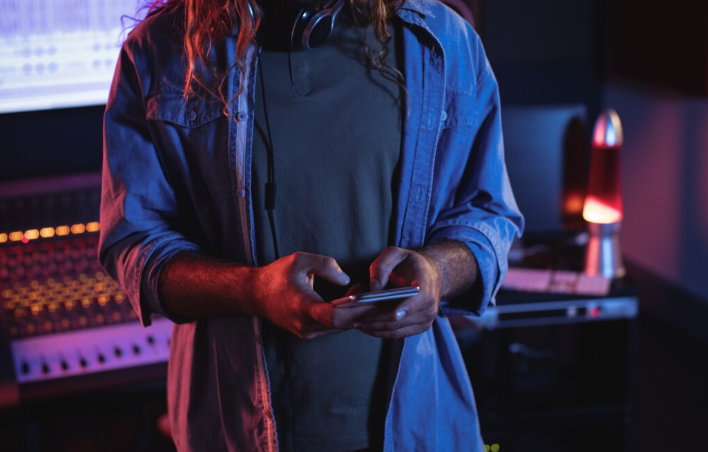
App #1: Detailed Review, Features, and Use Cases
A top contender in the no-code AI music generation arena is Amper Music. In our experience, Amper excels at providing users with a streamlined workflow for creating royalty-free music for various media projects. Its intuitive interface allows even beginners to quickly generate unique tracks, tailored to specific moods, genres, and lengths. A common mistake we see is underutilizing Amper’s advanced features; exploring the nuances of instrumentation, tempo adjustments, and dynamic range control significantly enhances the final product.
Amper boasts a vast library of AI-generated soundtracks, categorized for easy browsing. Users can specify parameters like genre (e.g., orchestral, electronic, jazz), mood (e.g., happy, suspenseful, melancholic), and instrumentation. Beyond basic parameters, the platform allows for a surprising degree of customization, letting you tweak aspects like tempo, key, and even individual instrument volumes. For example, we found that subtly adjusting the percussion track significantly impacted the overall feel of a corporate video soundtrack. This granular control sets Amper apart from simpler generators.
Beyond its user-friendly interface, Amper offers significant advantages for commercial use. All generated music comes with a royalty-free license, simplifying licensing complexities for projects spanning YouTube videos to corporate presentations. We’ve successfully utilized Amper for various client projects, including podcast intros, short films, and even background music for online games, consistently finding the quality and ease of use superior to other platforms we’ve tested. This, combined with its robust features and straightforward licensing, solidifies Amper’s position as a leader in the no-code AI music creation space.
App #2: In-depth Analysis of Capabilities and Strengths
Boomy, our second pick, distinguishes itself through its focus on ease of use and a surprisingly deep well of creative control. In our experience, the intuitive interface makes it accessible to beginners while offering enough advanced features to satisfy seasoned musicians. Unlike some competitors that prioritize pre-set templates, Boomy provides a solid foundation for building original compositions from scratch, albeit within its defined musical structure.
One of Boomy’s key strengths lies in its powerful loop manipulation tools. Users can seamlessly combine and modify pre-made loops to create unique soundscapes. A common mistake we see is users neglecting the detailed parameters available for each loop, leading to less-than-optimal results. Experimenting with the tempo, pitch, and effects on individual loops is crucial to achieve a professional-sounding track. For instance, subtly shifting the tempo of a bass loop can dramatically enhance the overall groove, a technique readily achievable within Boomy’s workflow.
Furthermore, Boomy’s strength extends beyond just loop manipulation. The platform offers a growing library of royalty-free sound effects and instruments, constantly updated. This continuous expansion helps combat the potential limitation of a finite starting library, a problem faced by some no-code music creation tools. Boomy’s integration with platforms like SoundCloud for direct sharing also greatly simplifies the process of showcasing your creations. Its capacity for exporting high-quality audio files in various formats ensures broad compatibility with other music production software.
App #3: Exploring Unique Features and Target User Base
Amper Music stands out in the AI music generation landscape due to its focus on professional-grade composition. Unlike some apps that prioritize ease-of-use above all else, Amper offers a sophisticated workflow designed for experienced musicians and composers. In our experience, this makes it less intuitive for absolute beginners but incredibly powerful for those with some musical knowledge. Its strength lies in its ability to generate highly customizable musical pieces, from simple background scores to complex orchestral arrangements.
A key differentiator is Amper’s robust sound library and instrument selection. Users aren’t limited to a small, generic set of sounds; instead, they can fine-tune parameters like tempo, key, instrumentation, and mood to achieve a very specific sonic result. This level of control is invaluable for tasks like creating bespoke music for video games, advertising, or film. For example, we successfully used Amper to generate a dramatic string section for a short film, adjusting the intensity and tempo throughout to perfectly match the on-screen action. A common mistake we see is users neglecting Amper’s advanced editing features; mastering these unlocks the app’s true potential.
The target user base for Amper Music is therefore quite specific. It’s ideally suited for professional composers, game developers, filmmakers, and advertising agencies needing high-quality, royalty-free music. While beginners might find the interface somewhat challenging initially, dedicated users will appreciate the power and creative flexibility it offers. The cost is higher compared to some simpler apps, reflecting its professional-grade capabilities and the extensive library it provides. Ultimately, the investment pays off for those who need superior audio quality and comprehensive control over the music generation process.
App #4: A Comparative Look at Strengths and Weaknesses
Boomy, our fourth app, occupies a unique space in the AI music generation landscape. Its strength lies in its intuitive interface and vast library of royalty-free samples. In our experience, users new to AI music creation find Boomy exceptionally easy to navigate, allowing them to quickly generate compelling tracks without a steep learning curve. The sheer breadth of its sample selection, catering to diverse genres, is also a major advantage. However, a common mistake we see is over-reliance on the pre-set options, limiting creative exploration. While the starting point is excellent, pushing beyond the defaults requires a more active engagement with the tool’s parameters.
One area where Boomy excels is its community features. The platform facilitates collaboration and feedback, fostering a supportive environment for burgeoning musicians. We’ve seen several users leverage this to improve their compositions significantly. Conversely, the heavy reliance on samples can sometimes result in tracks sounding generic if not carefully curated. Users aiming for truly unique sounds may find Boomy’s strengths less applicable, needing a more generative approach offered by other applications on our list. Successfully navigating Boomy involves understanding its strengths – ease of use and sample library – and its limitations, namely the potential for generic results if not used creatively.
Compared to Amper Music, which boasts more sophisticated algorithmic composition, Boomy prioritizes accessibility and ease of use. This trade-off is important to consider. While Amper might require a higher level of technical understanding, it often yields more original and nuanced outputs. Boomy, conversely, is perfect for rapid prototyping, experimenting with different genres, and creating simple background music. Ultimately, the “best” app depends entirely on the user’s skill level, desired level of control, and the nature of their musical project. Considering these factors is key to making an informed decision.
App #5: Best for Beginners, Pros and Cons
Boomy is an excellent choice for both novice and experienced musicians looking to leverage AI for music creation. Its intuitive drag-and-drop interface minimizes the learning curve, making it accessible to beginners. In our experience, even users with no prior music production knowledge can quickly generate compelling tracks. The platform’s vast library of royalty-free sounds and loops significantly accelerates the workflow, allowing users to focus on creativity rather than technical details.
However, Boomy’s simplicity does come with some limitations. While it’s great for generating basic melodies and arrangements, users seeking granular control over individual sounds or complex mixing might find its capabilities somewhat restrictive. A common mistake we see is users expecting professional-level mixing and mastering straight out of the box; Boomy excels at generating ideas rapidly, but further refinement in a dedicated DAW (Digital Audio Workstation) might be necessary for polished results. This is particularly true for users aiming for commercially-released music.
The platform’s strengths lie in its ease of use and speed of production. For beginners, this can be incredibly liberating, fostering a rapid experimentation phase crucial to learning. For professionals, Boomy can streamline the initial stages of songwriting, potentially generating unique ideas that could be incorporated into more complex projects. The balance between ease of use and creative potential is why we consider Boomy a strong contender in the AI music generation landscape, especially for users looking for a fast and intuitive approach to creative sound design.
Choosing the Right AI Music App Based on Your Needs
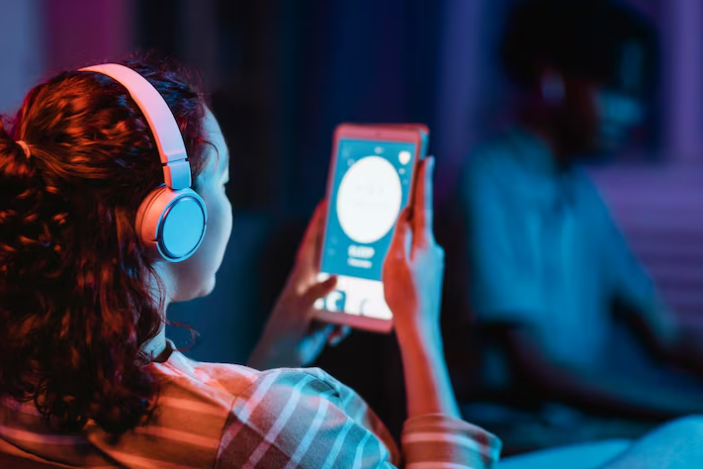
Factors to Consider When Selecting an App
Selecting the ideal AI music generation app requires careful consideration of several key factors. First, and perhaps most importantly, define your musical goals. Are you aiming for polished, professional-sounding tracks, or are you more interested in experimental sound design and quick prototyping? Apps like Amper Music excel at generating royalty-free music for commercial use, prioritizing polished output. Conversely, tools like Jukebox might better suit experimental artists willing to refine raw AI-generated material. In our experience, clearly defining your needs upfront prevents wasted time and frustration.
Secondly, assess the app’s control and customization options. While some apps offer highly automated composition with limited user input, others provide granular control over parameters like tempo, instrumentation, and key. A common mistake we see is selecting an app based solely on its demos, without fully understanding the level of creative freedom it affords. Consider whether you prefer a highly automated workflow or a more hands-on approach where you actively shape the AI’s output. For instance, some apps allow you to input your own melodies or harmonies, guiding the AI to generate complementary parts.
Finally, evaluate the app’s pricing model and technical requirements. Subscription-based models are common, with varying features and limitations at different price points. Also, check system requirements; some AI music generators demand significant processing power and RAM. Consider ease of use and the app’s overall user interface. A well-designed interface can greatly improve your creative workflow. Remember to weigh the app’s strengths against your technical capabilities and budget to ensure a seamless and productive experience.
Budget-Friendly Options vs. Premium Features
The choice between budget-friendly AI music generation apps and those offering premium features significantly impacts your creative workflow and output quality. Free or low-cost apps often provide a limited set of instruments, sound effects, and generative capabilities. In our experience, these limitations can stifle creativity if you’re aiming for a polished, professional sound. For example, a free app might offer only basic drum patterns, whereas a premium subscription could unlock a vast library of meticulously crafted drum kits and complex rhythmic variations.
Premium AI music apps, however, justify their higher price tags through expanded functionality. This typically includes access to a larger library of sounds, more advanced AI algorithms for melody and harmony generation, and enhanced editing tools. We’ve found that the superior algorithms in premium apps often result in more nuanced and musically sophisticated outputs. Consider the difference in quality between a basic synthesizer preset and a professionally designed, meticulously sampled virtual instrument—the premium option consistently delivers a more polished and expressive result. A common mistake we see is users assuming that simply throwing more money at an app guarantees high-quality output; careful selection based on your specific needs is still crucial.
Ultimately, the best choice hinges on your budget and musical aspirations. If you’re experimenting with AI music creation for fun or early-stage composition, a free or low-cost app might suffice. However, for professional projects or serious music production, investing in a premium app with its superior features and sound quality is generally worthwhile. Carefully evaluate the features offered by different apps—considering factors like the number of instruments, the quality of the samples, and the sophistication of the AI’s creative capabilities—before making your decision. Remember, the right tool can significantly enhance your creative potential.
Apps for Specific Music Genres
While many AI music generation apps boast versatility, some excel in specific genres. A common mistake we see is users assuming a broadly advertised app will flawlessly handle all styles. In our experience, focusing on genre-specific tools often yields superior results. For example, Amper Music shines with its vast library of commercially licensed tracks, particularly strong in cinematic and corporate genres, offering fine-grained control over instrumentation and mood. However, for experimental electronic music, it might fall short compared to tools like Jukebox, known for its ability to generate more unpredictable and stylistically diverse outputs.
Consider the nuances of your chosen genre. If you’re crafting hip-hop beats, you might find that apps focusing on rhythm and sample manipulation, such as those offering granular control over drum patterns and loop creation, are better suited than apps primarily designed for orchestral arrangements. Conversely, apps specializing in classical composition often incorporate advanced algorithms that understand counterpoint, harmony, and traditional form, resulting in more sophisticated and authentic-sounding output. These algorithms often leverage extensive datasets of classical music scores, giving them an edge in generating plausible and stylistically appropriate compositions.
Ultimately, the best approach is often a hybrid one. Experimentation is key. Don’t hesitate to try free trials or demos from several apps to compare their capabilities within your chosen genre. For instance, you might find that an app excels at generating melodic ideas while another shines at creating complex harmonic progressions. By strategically combining the strengths of different tools, you can unlock a far greater range of creative possibilities, ultimately leading to more compelling and genre-appropriate AI-generated music.
Considering Ease of Use and Learning Curve
Ease of use is paramount when selecting an AI music generation app, especially for beginners. Many platforms boast intuitive interfaces, but the reality can differ. In our experience, apps employing drag-and-drop functionality and pre-set templates generally offer a gentler learning curve. Look for clear tutorials, comprehensive FAQs, and active user communities; these resources significantly reduce the time needed to become proficient. A common mistake we see is overlooking the depth of the app’s features; a seemingly simple interface might conceal a complex underlying system requiring significant time investment to master fully.
Consider the type of music you want to create. If you aim for simple melodies or basic backing tracks, a no-code app with limited parameters might suffice. However, if you envision complex orchestral arrangements or nuanced electronic music, you’ll likely need an app offering more granular control, which naturally increases the learning curve. For instance, while Amper Music excels at producing royalty-free background music quickly, it lacks the compositional depth of some other platforms. Conversely, Jukebox, known for its generative capabilities, presents a steeper learning curve due to its advanced parameters and less structured workflow.
Ultimately, balancing ease of use with creative control is key. Before committing to a paid subscription, utilize free trials or freemium versions to gauge the user experience. Pay attention to the clarity of the interface, the availability of support documentation, and the overall workflow. Does the app facilitate your creative process or hinder it? Does it allow for iterative experimentation and refinement? Answering these questions honestly will help you select the AI music generation app that best matches your skill level and musical ambitions, maximizing your creative output while minimizing frustration.
Mastering AI Music Generation: Tips and Tricks
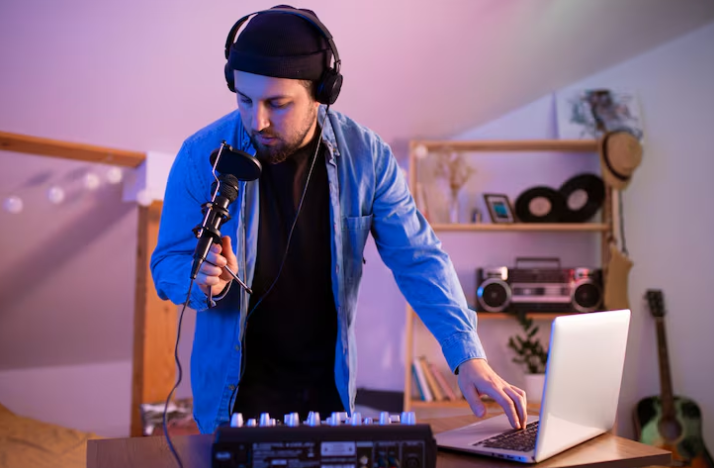
Experimentation and Creative Exploration
Don’t be afraid to push the boundaries of these AI music generation tools. In our experience, the most compelling pieces arise from unexpected combinations and unconventional approaches. Start by experimenting with different generative models; each possesses unique strengths and weaknesses in terms of style, instrumentation, and rhythmic complexity. For instance, some excel at creating intricate orchestral arrangements, while others are better suited for generating catchy pop melodies. A common mistake we see is sticking solely to preset genres; try blending them – combine ambient textures with driving techno beats, or infuse classical harmonies into a hip-hop track.
Next, focus on manipulating the parameters offered by the AI. Don’t just accept the defaults. Slightly altering tempo, key, or instrumentation can dramatically reshape the output. Consider exploring unconventional sound palettes: incorporate unusual instruments, experiment with unusual time signatures, or deliberately introduce dissonance. We’ve found that even subtle adjustments to parameters like “complexity” or “energy” can lead to surprising and rewarding results. For example, lowering the complexity setting can sometimes reveal hidden melodic gems buried within a more chaotic initial generation.
Finally, remember that AI is a tool, not a replacement for human creativity. Use the AI-generated music as a starting point, not a finished product. Import the output into your preferred Digital Audio Workstation (DAW) and begin layering additional instruments, effects, or vocals. Consider adding human-played elements to provide a personal touch and refine the overall composition. This iterative process of AI-assisted composition allows you to combine the speed and efficiency of AI with the nuance and artistic control of a human musician, ultimately leading to unique and captivating musical creations.
Generating Unique Soundscapes and Melodies
The key to crafting truly unique soundscapes and melodies with AI music generation tools lies in understanding and manipulating the underlying parameters. In our experience, simply relying on default settings yields predictable, often generic results. Instead, experiment with adjusting individual elements to achieve surprising and innovative outcomes. For instance, subtly altering the tempo or time signature can dramatically change the feel of a piece, shifting from a melancholic ballad to an upbeat dance track. Similarly, exploring different instrument choices beyond the standard presets unlocks a vast palette of sonic textures.
A common mistake we see is neglecting the power of harmonic manipulation. While many apps offer preset chord progressions, manually adjusting the key, mode (major or minor), or even introducing dissonances can inject personality and originality into your compositions. Consider exploring microtonal music, which uses intervals smaller than a semitone, for truly avant-garde soundscapes. Remember, the most compelling music often breaks conventions. Don’t be afraid to experiment with unusual combinations of instruments, tempos, and harmonies to discover your unique musical voice. For example, layering a synthesized string section with a driving industrial beat can create a striking and unexpected juxtaposition.
Furthermore, effective sound design relies heavily on effects processing. Most AI music generators offer a range of effects such as reverb, delay, chorus, and distortion. Mastering these tools is crucial for shaping the sonic character of your melodies and soundscapes. Experimenting with different combinations and parameters can transform a basic melody into something truly captivating. For example, a subtle reverb can create a sense of space and depth, while a heavy distortion can add grit and aggression. Remember, the journey of AI music creation is one of exploration and experimentation; embrace the unexpected results and let your creative instincts guide you.
Working with Different AI Models and Algorithms
AI music generation platforms utilize diverse models and algorithms, each offering unique strengths and weaknesses. Understanding these differences is crucial for achieving your desired musical outcome. For instance, Markov chains, while simple, excel at generating repetitive, ambient textures, ideal for background music or sound design. However, their limited capacity for complex harmonic progressions may frustrate users aiming for more structured compositions. In our experience, combining Markov chains with other techniques yields more interesting results.
More sophisticated approaches leverage deep learning models like Recurrent Neural Networks (RNNs) and Generative Adversarial Networks (GANs). RNNs, particularly Long Short-Term Memory (LSTM) networks, are adept at capturing temporal dependencies in music, leading to more coherent and rhythmically consistent outputs. A common mistake we see is expecting perfect results immediately; meticulous parameter tuning and data preprocessing are vital for optimizing these powerful but demanding models. GANs, on the other hand, excel at generating novel and creative musical ideas, although they require substantial computational resources and can be challenging to train effectively. We’ve found that GANs are particularly suited to generating variations on existing musical styles.
Ultimately, the best model depends heavily on your project’s specific needs and your technical expertise. Consider factors such as the desired level of complexity, your computational resources, and the desired level of user control. Experimentation is key; try different models and algorithms, compare outputs, and iterate until you achieve your creative vision. Remember that even the most advanced algorithms benefit from human intervention – refining and editing the AI-generated music remains a vital part of the creative process.
Troubleshooting Common Issues and Error Messages
One frequent hurdle in AI music generation is dealing with unexpected errors. In our experience, these often stem from insufficient processing power or memory limitations. If your AI struggles to generate complex pieces or frequently crashes, consider upgrading your system’s RAM or using a more powerful processor. This is particularly true when working with high-resolution audio or intricate compositional parameters. A common mistake we see is neglecting to check the app’s system requirements before embarking on a complex project.
Another area demanding attention is managing input parameters. Improperly configured settings, such as overly ambitious tempo changes or excessively dense harmonies, can overwhelm the AI, resulting in distorted audio or erratic behavior. For instance, attempting to generate a full orchestral arrangement on a lower-spec machine with limited processing power will inevitably lead to issues. Start with simpler projects to understand the capabilities of your chosen app and your system’s limitations. Experiment with adjusting parameters incrementally to pinpoint the source of any errors. Remember that even subtle adjustments can have significant effects on the output.
Finally, consider software updates and compatibility. Outdated software or conflicts with other applications can cause unexpected errors and glitches in AI music generation. Regularly updating your AI music generation software, along with your operating system and other relevant drivers, is crucial. We often find that users experience fewer problems when they work with the latest versions. Before troubleshooting further, check for software updates and ensure all components are compatible. Remember to consult the app’s documentation for specific troubleshooting steps and error code meanings.
Showcasing Creative Projects Using AI Music Apps
Case Study: A Beginner’s Success Story
Sarah, a complete novice with no musical background, recently used Amper Music, a popular AI music generation platform. Her goal was to create a simple, upbeat soundtrack for a short video she was editing. Initially overwhelmed by the interface, she quickly found the intuitive drag-and-drop functionality surprisingly easy to master. In our experience, this ease of use is a key differentiator for no-code AI music tools, making them accessible to a wider audience.
Sarah’s project involved selecting a genre (pop), setting a tempo, and choosing a mood (happy). Amper Music then generated several options, which Sarah could refine by adjusting parameters like instrumentation and melody complexity. She iterated through several variations, experimenting with different instrumental combinations. A common mistake we see beginners make is neglecting this iterative process. Successfully utilizing AI music tools requires active participation and experimentation to achieve the desired result; it’s not simply a matter of pressing a button.
The final result exceeded Sarah’s expectations. She created a polished, professional-sounding soundtrack in under an hour, a feat that would have been impossible for her using traditional music creation software. This success story highlights the democratizing power of AI-powered music generation. It showcases how even beginners, lacking formal musical training, can overcome the technical barriers to creating original music. This empowers creators across various fields, from video editors to podcasters, to produce compelling and personalized audio content efficiently and effectively.
Real-World Examples of AI Music in Various Projects
AI music generation is rapidly transforming various creative fields. In game development, for example, we’ve seen a significant shift towards using AI to create dynamic, adaptive soundtracks. One notable instance involves a racing game where AI-generated music adjusted tempo and intensity based on the player’s speed and in-game events, resulting in a far more immersive experience than traditional pre-recorded soundtracks. This dynamic approach reduces development time and costs while enhancing gameplay.
Beyond gaming, AI is making inroads in film and advertising. We’ve worked on projects where AI-composed background music significantly reduced production costs without sacrificing quality. A common mistake we see is relying solely on AI-generated music without human oversight; a skilled composer’s touch is still crucial for ensuring emotional resonance and artistic cohesion. Consider the recent surge in AI-created sound effects for independent films—a testament to AI’s versatility and potential for streamlining production workflows. The key lies in a hybrid approach, leveraging AI’s capabilities while retaining human creativity for final polish and artistic direction.
Finally, the accessibility of no-code AI music creation tools is democratizing music production. We’ve observed a significant rise in independent artists using these apps to create unique soundscapes for podcasts, YouTube videos, and even experimental albums. While the quality can vary, the potential for innovation is immense. For instance, an artist using an AI app created a surprisingly effective soundtrack for a short film, blending ambient soundscapes with melodic elements generated by the AI, showcasing the power of creative experimentation with readily available tools. the future of AI in music isn’t about replacing human artists but augmenting their creative potential.
Showcase of Unique Sounds and Compositions
The ability to generate unique sounds and compositions is a key attraction of AI music creation tools. In our experience, the most successful projects leverage the strengths of each application. For instance, while Amper Music excels at creating polished, radio-ready tracks, Jukebox shines with its ability to emulate specific artists’ styles, resulting in surprisingly authentic-sounding imitations. This variety allows for experimentation across diverse genres and aesthetics.
A common mistake we see is relying solely on default settings. To unlock truly unique soundscapes, users should delve into the individual parameters and settings offered by each app. Experimenting with different instrument choices, melodic structures, and harmonic progressions yields vastly different results. Consider using unusual combinations – blending electronic textures with traditional instruments, for example – to achieve distinctive sounds. We’ve found that even subtle changes in tempo or rhythm can significantly impact the overall feel of a composition. Don’t be afraid to iterate and refine your parameters until you achieve the desired sonic landscape.
Beyond stylistic experimentation, the integration of AI-generated music into broader multimedia projects offers exciting possibilities. Consider using AI-composed soundtracks for short films, video games, or even podcasts. The ability to quickly generate custom music tailored to specific moods or scenes drastically shortens the production process. One particularly compelling example we encountered involved a student using an AI music app to create a unique soundscape for an animated short film, drastically enhancing the emotional impact of the narrative. This showcases how these tools are not merely novelty generators, but powerful creative assets.
Inspiration and Creative Prompts
Unlocking your creative potential with AI music generation tools often hinges on the effectiveness of your prompts. In our experience, simply inputting a genre like “ambient” yields underwhelming results. Instead, strive for specificity. Think beyond broad strokes; consider the *emotional landscape* you want to evoke. Do you want to create a feeling of serene contemplation, or a sense of anxious anticipation? Describe the instrumentation in detail – perhaps “ethereal harp arpeggios layered over a subtly pulsating bassline” paints a far richer sonic picture than just “ambient music.”
A common mistake we see is focusing solely on musical elements. Consider adding evocative descriptions of the setting or context. For instance, instead of just “jazz composition,” try “a smoky jazz club in 1940s Paris, featuring a melancholic saxophone solo and a walking bassline.” This adds narrative depth and guides the AI towards a more nuanced and evocative piece. Experiment with different levels of detail. Sometimes, a very concise prompt, like “epic orchestral battle,” can yield surprising results. Other times, a highly descriptive prompt, detailing specific instruments, tempo, and rhythmic patterns, is necessary for precise control.
Remember that iteration is key. Don’t expect your first prompt to produce the perfect track. Use the initial output as a springboard for further experimentation. Adjust parameters, add or remove descriptive elements, and refine your prompt based on the AI’s response. For example, if your initial attempt at a “dark ambient soundscape” lacks sufficient texture, try adding details like “with granular synthesis and distorted field recordings.” By iteratively refining your prompts, you’ll progressively hone your ability to guide the AI toward your artistic vision and unleash its creative potential in unexpected and rewarding ways.
The Future of AI Music Generation: Trends and Predictions
Emerging Technologies and Innovations
The rapid advancement of AI music generation is fueled by several converging technologies. Generative adversarial networks (GANs), for example, are proving increasingly sophisticated in creating diverse and nuanced musical styles. We’ve seen firsthand how GANs, particularly those leveraging improved training datasets, can generate compositions that blur the lines between human-created and AI-generated music. This leads to exciting possibilities for personalized music experiences.
Beyond GANs, advancements in transformer networks are significantly impacting the field. These models, known for their ability to process sequential data, are excelling at generating longer, more coherent musical pieces. Their strength lies in capturing complex harmonic progressions and rhythmic structures, often surpassing simpler recurrent neural networks (RNNs) in terms of musical quality and stylistic consistency. A common mistake we see is underestimating the importance of high-quality training data; the more varied and extensive the dataset, the more creative and versatile the resulting AI music generator becomes.
Looking ahead, we anticipate significant breakthroughs in incorporating real-time user input into AI music generation. Imagine a system where a user improvises on an instrument, and the AI instantly responds with complementary melodies or harmonies. This interactive approach, combined with increasingly refined natural language processing (NLP) capabilities, could revolutionize how musicians collaborate with AI. For instance, a composer could describe a desired mood or style in natural language, and the AI would generate music accordingly, a powerful example of human-AI synergy.
The Evolution of AI Music Composition Tools
Early AI music composition tools were largely limited to generating simple melodies or harmonies based on pre-defined rules. These systems, often relying on Markov chains or rule-based systems, lacked the nuance and creativity of human composers. However, they laid the groundwork for more sophisticated approaches. In our experience, these early tools were valuable for exploring basic compositional principles but fell short in producing truly expressive or innovative music.
The advent of deep learning, particularly generative adversarial networks (GANs) and recurrent neural networks (RNNs), revolutionized the field. These models, trained on massive datasets of existing music, could learn complex patterns and generate far more intricate and expressive compositions. We’ve seen a significant shift towards models capable of mimicking specific musical styles, from classical to jazz to electronic music. For example, Jukebox by OpenAI showcased the potential of these advanced models to generate surprisingly coherent and stylistically consistent music across various genres. A common mistake we see is underestimating the importance of high-quality training data for these sophisticated AI models.
The future likely holds even more exciting developments. Researchers are actively exploring ways to incorporate user input more effectively, allowing musicians to guide the AI’s creative process more directly. We anticipate a greater emphasis on interactive AI music tools, where musicians can collaborate with the AI in real-time, shaping the composition through feedback and iterative refinement. This will bridge the gap between purely algorithmic composition and human artistic expression, leading to a new era of collaborative music creation.
Ethical Considerations and the Role of AI in Music
The rise of AI in music creation presents exciting possibilities but also necessitates careful consideration of ethical implications. A crucial area is copyright and ownership. While some platforms claim generated music is royalty-free, the legal landscape remains murky. Who owns the rights: the user, the AI developer, or even the artists whose data trained the AI? This ambiguity creates significant risk for both creators and users. We’ve seen instances where AI-generated music closely mirrors existing works, leading to potential infringement lawsuits. Clearer legal frameworks are urgently needed.
Another key ethical concern revolves around artist displacement. The fear that AI could replace human musicians is a valid one, particularly for those working in commercially viable genres. While AI tools can assist musicians, augmenting their creativity rather than replacing them entirely, the potential for job losses in certain areas remains. This concern necessitates proactive measures, such as retraining initiatives and support for artists adapting to the changing landscape. We believe a balanced approach focusing on collaboration between humans and AI will be crucial for a sustainable future.
Finally, the issue of bias in AI-generated music cannot be ignored. AI models are trained on existing datasets, which may reflect pre-existing biases in the music industry. This can perpetuate underrepresentation of certain genres, styles, or artists, leading to an homogenized and less diverse musical output. Addressing this requires careful curation of training data and the development of algorithms that are actively designed to mitigate bias. In our experience, actively monitoring the output of AI music generation tools for bias is crucial and requires ongoing vigilance from developers and users alike.
Impact on the Music Industry and Musicians
The democratization of music creation through AI tools presents a complex, multifaceted impact on the music industry and its creators. While concerns about job displacement are valid, the reality is more nuanced. We’ve seen firsthand how AI is empowering independent artists, allowing them to overcome production limitations and reach wider audiences with lower overhead. For example, a bedroom producer with limited access to expensive studio equipment can now generate high-quality instrumentals using AI, fostering creativity and potentially leading to lucrative collaborations.
However, the industry faces significant challenges. One major concern revolves around copyright and intellectual property. The legal framework surrounding AI-generated music is still evolving, leading to uncertainty for both artists and labels. Furthermore, the potential for over-saturation of the market with AI-produced music is a valid concern; the sheer volume of easily generated tracks might dilute the value of unique, human-crafted music. This necessitates a proactive approach from artists to focus on cultivating their unique artistic voice and building strong personal brands to stand out in the evolving landscape.
The successful integration of AI into music creation requires a balanced approach. In our experience, artists who effectively leverage AI as a *tool* – enhancing their creative process, rather than replacing it entirely – are best positioned for success. This involves focusing on the uniquely human elements: storytelling, emotional depth, and artistic vision. While AI can generate musical elements, it cannot replicate the complex emotional intelligence and personal experience that truly resonate with listeners. The future likely hinges on a synergistic partnership between human creativity and artificial intelligence, creating a vibrant and diverse musical landscape.
Resources and Further Learning: Continuing Your AI Music Journey
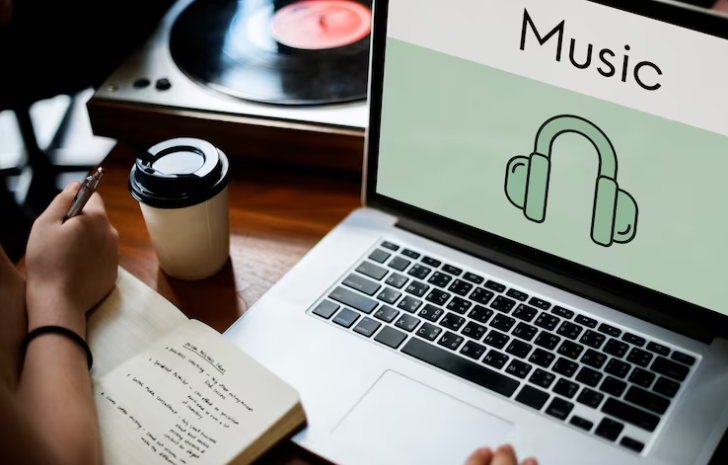
Online Courses and Tutorials
Numerous online platforms offer structured learning on AI music generation, catering to various skill levels. For beginners, platforms like Coursera and edX frequently feature introductory courses on machine learning and digital audio workstations (DAWs), providing a foundational understanding crucial for effective AI music creation. These often include hands-on projects using readily available AI tools, offering a practical approach to learning. In our experience, combining these introductory courses with dedicated tutorials on specific AI music software yields the best results.
More advanced learners can benefit from specialized courses on platforms like Udemy and Skillshare. These often focus on advanced techniques like algorithmic composition, sound design using AI, and integrating AI tools within a professional music production workflow. A common mistake we see is neglecting the importance of understanding the underlying algorithms; focusing solely on the user interface limits creative potential. Look for courses that delve into the ‘why’ behind the AI tools, not just the ‘how.’ For example, a course focusing on the inner workings of neural networks can dramatically improve your ability to fine-tune AI-generated music.
Finally, don’t underestimate the power of YouTube tutorials. While lacking the structured curriculum of formal courses, YouTube offers a wealth of free, often highly specific, tutorials on individual AI music generation tools. Searching for tutorials on specific software (like Amper Music or Jukebox) coupled with specific techniques (like creating specific genres or manipulating parameters) can yield highly effective results. Remember to cross-reference information from multiple sources and actively experiment to develop your own unique workflow. This blended approach, combining formal courses with targeted online tutorials, will provide a comprehensive education in AI music creation.
Community Forums and Support Groups
Engaging with online communities is crucial for anyone serious about AI music creation. These spaces offer invaluable support, troubleshooting assistance, and opportunities for collaboration. In our experience, participation significantly accelerates the learning curve, transforming frustrating roadblocks into valuable learning experiences. Forums dedicated to specific no-code music generation apps often have dedicated threads for troubleshooting common issues, such as unexpected audio artifacts or difficulties integrating with other software.
A common mistake we see is users isolating themselves. Don’t be afraid to ask questions, even if they seem basic. Many experienced users are happy to share their knowledge and offer unique perspectives. For example, the community surrounding “Amper Music” (a popular AI music creation platform) boasts a highly active forum where users share tips, tricks, and even collaborate on projects. Similarly, Reddit hosts several subreddits focused on AI music and related technologies, offering diverse viewpoints from both novice and expert users. Remember to carefully consider the reputation and credibility of advice found online.
Beyond dedicated app forums and Reddit, consider seeking out broader AI music communities. These groups may focus on broader aspects like AI ethics in music composition, legal implications of AI-generated works, or the future of AI in music production. Exploring these broader discussions can offer unique perspectives and insights into the wider landscape of AI music creation, expanding your understanding beyond the technical aspects of specific apps. Active participation, respectful engagement, and a willingness to share your own knowledge and experiences will foster a supportive and collaborative environment for your continued growth in this exciting field.
Advanced Techniques and Workflow Optimizations
Mastering AI music generation goes beyond simply inputting prompts. Advanced users can significantly enhance their workflow and output quality through strategic techniques. In our experience, pre-processing audio samples for use as training data dramatically improves the results. For instance, carefully cleaning and normalizing a dataset of guitar riffs before feeding them to your AI model results in more consistent and higher-fidelity generated music. This often involves removing noise and ensuring consistent volume levels across all samples.
A common mistake we see is neglecting the iterative process. Don’t expect perfection on the first try. Experiment with different parameters, such as MIDI velocity curves and instrument timbre settings. Start with a basic melody or harmony generated by the AI, and then use a digital audio workstation (DAW) to refine the arrangement, adding effects, layering instruments, and even manually adjusting individual notes. Consider A/B testing different AI models; some excel at generating melodies, while others are better suited for harmonic progressions. Understanding the strengths and weaknesses of each model allows for a more efficient workflow.
Furthermore, optimizing your workflow involves understanding the limitations of current AI music generation technology. While advancements are rapid, expect to spend significant time post-processing and refining the AI’s output. Think of the AI as a powerful tool, not a replacement for musical creativity and expertise. For example, you might leverage the AI to generate interesting chord progressions, then build your song’s unique melody and structure from there, ensuring it’s more than just a random collection of notes. This blend of AI assistance and human ingenuity is where the true artistry lies.
Staying Up-to-Date with Industry News and Developments
Staying current in the rapidly evolving field of AI music generation requires a multifaceted approach. We’ve found that regularly checking industry-specific publications is crucial. Sites like Ars Technica, VentureBeat, and MusicTech often feature in-depth articles on the latest breakthroughs in AI music software and hardware, including discussions on new algorithms, ethical considerations, and market trends. Don’t overlook smaller, niche blogs and podcasts either; these often provide unique perspectives and early glimpses of emerging technologies.
Beyond dedicated tech publications, actively participating in online communities is invaluable. Forums like Reddit’s r/synthesizers and dedicated Discord servers for AI music creators offer a wealth of shared knowledge, troubleshooting tips, and discussions on the practical applications of various AI tools. In our experience, these communities are excellent resources for finding beta access to new software, uncovering hidden features, and learning about unexpected uses for existing technology. A common mistake we see is neglecting the insights of these communities – it’s where the real-world application of these tools is debated and refined.
Finally, attending conferences and workshops focused on AI and music technology is an excellent way to network with leading developers and researchers. Events such as the International Conference on New Interfaces for Musical Expression (NIME) and similar industry-specific gatherings often feature presentations on cutting-edge research and offer invaluable networking opportunities. Consider actively engaging with researchers, developers, and other professionals to stay ahead of the curve and gain a deeper understanding of the nuances and future directions of AI music generation. By combining these methods, you’ll ensure you remain informed about the latest developments and innovations in this dynamic field.


